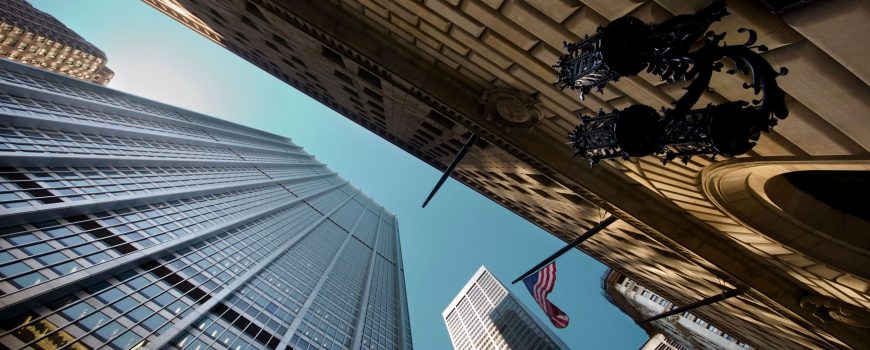)
The lingering trade dispute with China may, or may not, get resolved. The nation with the world’s largest oil reserves, Venezuela, can’t resolve their internal power struggle, global economic growth is slowing, particularly in the Eurozone and China. Stirred together, many others had predicted that this was supposed to signal the start of a global recession that would be dragging down the U.S. economy by now. Not us! As we predicted at the start of the year in the Dynamic Capital 2019 Economic Outlook (you can read it on Dynamic’s website by clicking here), the American economic locomotive keeps on chugging.
How is that possible? As history has shown us, global economic uncertainty leads to global investors shifting their money to safer U.S. assets which drives up the value of the dollar since dollars are needed (think supply vs demand) to purchase these assets. This is depicted by the U.S. Dollar Index (DXY), which tracks the strength of the dollar against a basket of major currencies. The dollar has held its strength and reamined near the peak its 52-week high. U.S. Dollar Index goes up when the U.S. dollar gains “strength” (value), compared to other currencies. In particular, it has gained 7% against the Euro since it began its ascent last April, and nearly 10% against the Chinese Yuan over the same period.
Driving that strength from the American end of the spectrum is the continued increase in consumer spending, which itself is being driven by our strong labor market. Even with the recent government shutdown, the January Labor Department jobs report showed an increase in nonfarm payroll jobs of 304,000 which blew most estimates out of the water. On top of that, hourly earnings increased 3.2% year-over-year.
So, with more people working, and workers earning more money for their work, we end up with increased consumer spending (since it’s a well known fact around the world that Americans aren’t prone to saving this “extra” money). In addition, thanks to the shale revolution causing the U.S. to become a leading oil producer, energy prices have lowered and remained stable (so now when OPEC tries to cut production to raise global oil prices, American oil production can increase to offset this). Finally, mix in the reality of foreign goods made less expensive by the strength of the U.S. dollar, you get an American consumer who feels like they have purchasing power!
Federal Reserve Chairman Jerome Powell, also calmed the domestic market by announcing that planned interest rate hikes for 2019 were being put on hold. Instead the Fed would respond to the data with regards to where it sets the Fed’s Funds Rate (the rate the Federal Reserve pays banking institutions money parked at the Federal Reserve), which affects the interests rates businesses and consumers pay on just about everything.
Essentially, what Mr. Powell did was open the door of the Fed to cuts rates should our economy show any hints of a looming slowdown. Business can take advantage of the potential of any interest rate cuts by obtaining financing with a variable interest rate. The downside to this approach; however, is that if obtaining long-term financing, exposure is created to higher interest rates if U.S. economy runs hot in the next economic cycle.
Another alternative is to delay the obtaining any traditional financing pegged to those rates until later in 2019, and instead seek a fixed-cost short term solution that allows for a business to take advantage of the current economic environment without sacrificing long term financial flexibility.
If you need assistance determining how to best take advantage of the current economic conditions, Dynamic Capital’s experienced and knowledgeable representatives would be happy to discuss your unique situation and create a custom tailored action plan that fits your business.

